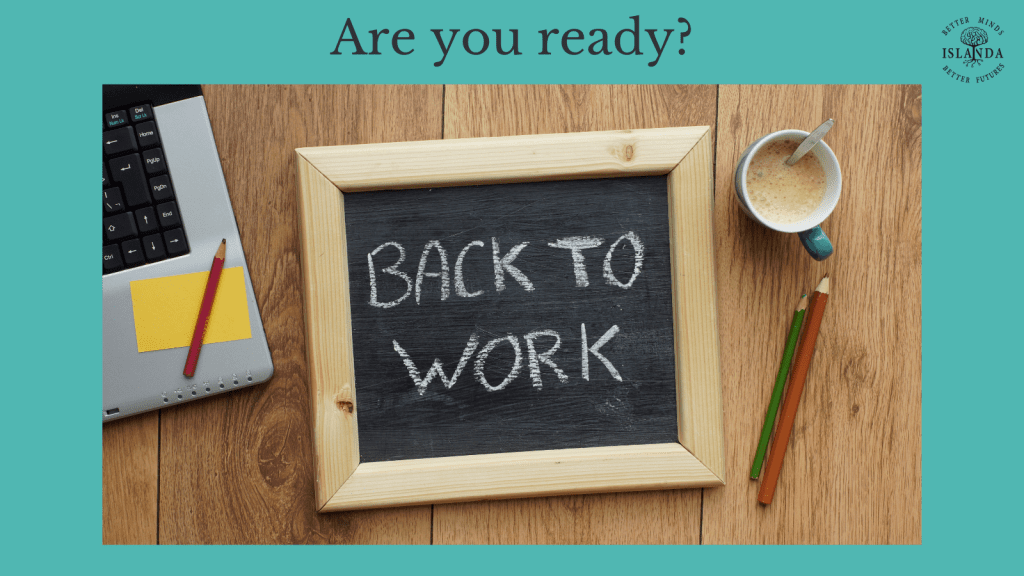Last year the pandemic prompted us to limit our physical contact leading to a new norm of working from home with an emphasis on all things digital. Now, with the virus no longer calling the shots, we are able to decide on how we want to work when the restrictions are lifted. And whilst returning to pre-pandemic practises might seem the simplest option, it may not be the most popular one – many benefits of home-working have been realised.
Any change, even expected or welcome change, can elicit stress and anxiety and as such, increased levels of stress and anxiety are expected. Furthermore, with brains primed for survival prompting a ‘negative bias’, as well as an ability to pick up on the emotions of others ’emotions are contagious’, stress and anxiety can spread rapidly, if unchecked.
Having an effective strategy to navigate the range of emotions being experienced will be paramount to a successful return to a post-pandemic world.
What to expect
When we experience an emotion it shows up in many ways, as a thought, a feeling or as a behaviour. Thinking of the return to work – there will be a range of experiences and responses. Consider these as continuums:
- Experiences may range from having no work to being over-worked, from having no pay, furloughed or fully paid and from working pretty much as usual to a complete change in where and how you work. This leads to a range of thoughts, feelings and behaviours:
- Emotions may range from being exhausted to rested, from panicked/anxious to calm/excited or from depressed to ecstatic and so on
- Thoughts may range from being unlucky to fortunate, from being valued to completely under-valued or from being fairly treated to unfairly treated
- Behaviours may range from being resistant to fully engaged, from being fearful to proactive or from being negative to positive
In short, we have all had different experiences and have a different lens through which we see the world so literally any response is possible and, is indeed, valid.
The opportunity is to acknowledge the emotions and use the energy provided by those emotions towards re-connecting and engaging with productive activities that will in turn provide the optimal results. In contrast, failing to acknowledge emotions, or suppressing them, has a number of negative implications. The emotions are likely to persist as the unmet need that gave rise to the emotion remains unmet, overall energy reserves are depleted and physical and mental health & well-being will decline.
Use this simple technique to ACT on the emotions at play, to harness the energy in emotions and transform it from focussing on ‘protection’ to focussing on ‘connection’ and ‘production’. This technique enables people to feel ‘safe’, where their fears and needs are understood and met which enables them to switch their attention from protecting themselves to engaging their energy into activities that yield results. This is a win win situation – people will feel more energised, happy and fulfilled and the business benefits as the people will be performing at their best.
What practical things can you do to prepare?
Create a people-focussed strategy, beyond the detailed systems and processes:
Look after yourself as a leader
- Be conscious of your own emotions and how they are influencing your behaviours
- Look after yourself and your own energy levels – make self-care a priority
- Be the role model for the behaviours you want to see in others
Be mindful of how you interact
- Be curious about what’s going on, their experience and perceptions – don’t judge from your perspective, seek to ‘see’ it from a different viewpoint
- Be compassionate – show you care
- Be open-minded – focus on purpose and what you want to achieve – allow autonomy as to how it is achieved
Pay attention to the environment – physical and cultural
- Provide a clear direction – consider re-visiting your ‘Vision and Values’ to re-ignite excitement and shared purpose
- Develop a culture for open and honest conversations – encourage people to talk about how they are feeling, how they perceive what’s going on and to explore the differences
- Pay attention to how the physical environment is influencing behaviours. For example, if you want people to interact socially provide appropriate communal space or if you want to encourage healthy eating and activities, make water stations and healthy snacks more visible and accessible
Create opportunities for re-connecting with each other and the shared vision
Why not consider ‘back to work’ team-building sessions with the purpose of creating a ‘safe space’ to:
- Encourage open and honest conversations about individual experiences throughout the pandemic
- Explore new ways of working, for example, what practises have been developed that can be carried forward – decide what to Adopt, Adapt, Abandon
- Discuss ideas for supporting each other
- Re-establish a common purpose and goals
In short, take time to set the tone, understand and respond appropriately and compassionately – this is an investment that will reap rewards in terms of trust, engagement and sustainability. When people feel valued, cared for and excited they are able to connect, collaborate and engage fully which in turn results in optimal performance and the best results.
If you would like to discuss your back to work strategy or ideas for team-building workshops please get in touch at [email protected]. We offer a range of tools for measuring the emotional climate of your business, improving communication and understanding how to influence positive behaviours as well as a simple yet effective online course for developing emotional intelligence – a must have skill in today’s complex and uncertain world.
